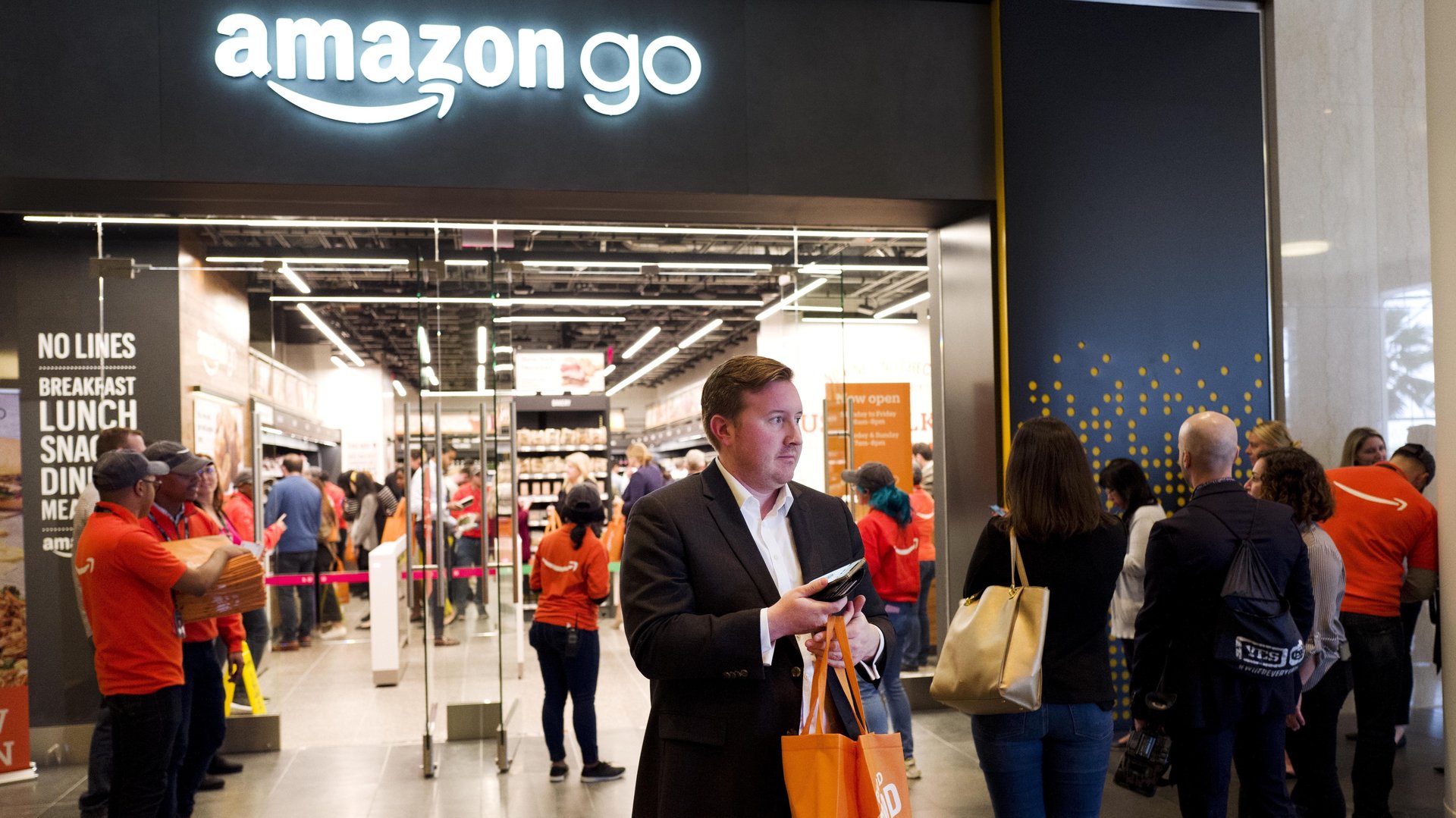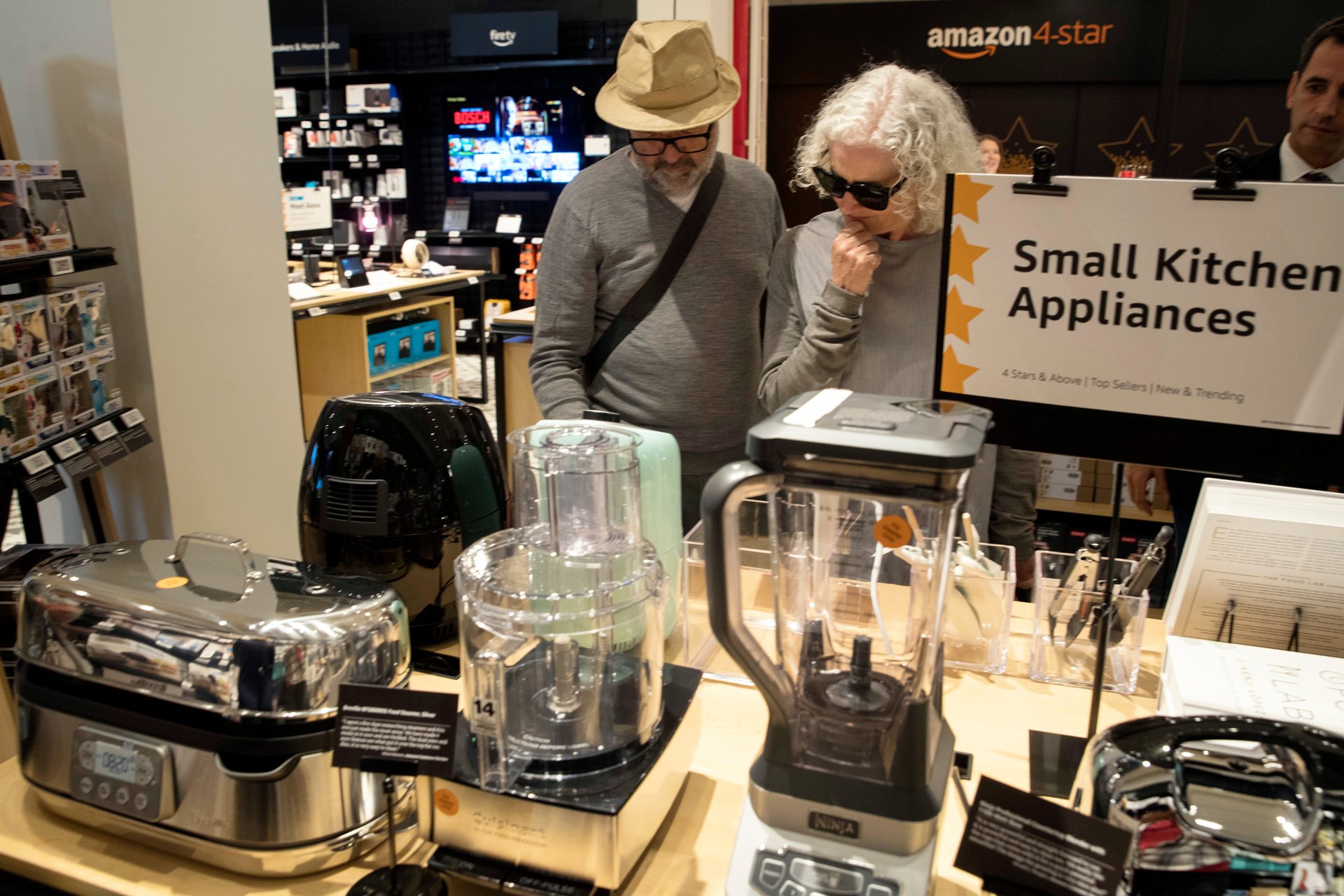Why Amazon is betting on stores
At the heart of Amazon’s founding was the premise that e-commerce offers certain advantages physical stores just can’t match. Online shops are accessible from anywhere with an internet connection; they’re open 24 hours a day, seven days a week; and they’ve got unlimited shelf space. In his 2018 letter to shareholders, founder Jeff Bezos said if Amazon were a physical store, it would stretch across six football fields.


At the heart of Amazon’s founding was the premise that e-commerce offers certain advantages physical stores just can’t match. Online shops are accessible from anywhere with an internet connection; they’re open 24 hours a day, seven days a week; and they’ve got unlimited shelf space. In his 2018 letter to shareholders, founder Jeff Bezos said if Amazon were a physical store, it would stretch across six football fields.
But Bezos also made two other points in the letter: First, stores are still where most shopping happens. Today in the US, only about 11% of sales are online, and while they’re quickly growing, that still leaves 89% of sales offline. Second, as Amazon gets larger, everything needs to scale with it, including the size of its experiments if it intends to keep generating new ideas. Stores are a project that can work for both. To keep up the fight in retail and find new ways to innovate, Amazon has decided to get physical.

The company opened its first brick-and-mortar location in 2015. It sold books, the same category Amazon used to launch its e-commerce empire. It has since added more bookstores while toying with other store formats, such as 4-Star stores, which showcase some of the highly rated products it sells online, and cashier-less Go stores. To enter, you open the Amazon Go app, and the store uses a vast array of cameras to track what you put in your shopping bag. Amazon automatically charges you when you leave. Bezos has described it as eliminating the worst part of physical retail: the checkout lines.
Right now Amazon lists 23 Go stores as open, all located in just four US cities: Chicago, New York, San Francisco, and Seattle. In total, all these new formats account for just a few dozen stores open in the US. By far the biggest bet Amazon has made on stores was its $13.7 billion purchase of Whole Foods in 2017, which gave it practically the entirety of its store footprint today. It got 440 locations in the deal, a number it has since increased.
If it’s unclear what the overarching strategy is, aside from a focus on big cities, there may be a reason for that. “They don’t know what’s going to happen with stores,” says Sucharita Kodali, a retail analyst at Forrester Research. “I would be shocked if they had a plan. I think it’s about throwing things against the wall and seeing what sticks.”
Surveys routinely find that shoppers—even young ones—still like going to stores. It’s true the US has too much retail space and it’s proved unsustainable as e-commerce has grown. But not all store space is a problem. Amazon’s competitors are finding the stores that at times weighed them down offer some advantages too, so long as they invest in them. Walmart, for one, reportedly imagines its giant supercenters as the nexus of a sprawling relationship with customers where it not only sells them products but offers services, such as health clinics or financial services, while feeding data back to the company.
Amazon, which declined to comment on its strategy regarding stores, appears to recognize the appeal of physical spaces to shoppers and is seeking ways to use and reinvent them. Benedict Evans, a technology analyst and former partner at Silicon Valley venture capital firm Andreessen Horowitz, opined in Wired last year, “It’s trying everything that anyone has ever tried before, and anything else that it can think of that might make sense, as well.”
Probably the biggest question mark is its plan for grocery stores. Amazon had been eyeing grocery for years, but as a category, it has remained stubbornly resistant to e-commerce. Though online sales are expected to rise fast, just 2% to 3% of groceries are currently bought online in the US, depending on the estimate. Not only did Amazon get a network of stores with its Whole Foods purchase, most of them were in proximity to some 75 million fairly wealthy shoppers, a key demographic among Prime subscribers. Never a company to prioritize profit, Amazon has lowered prices at the upscale chain, while using Whole Foods to showcase products such as its Echo speakers and attract more people to Prime with exclusive discounts.
But Whole Foods and its physical spaces arguably weren’t the most logical purchase either. A big reason grocery sales have been slow to move online is because there are still so many physical stores around, explains Kodali. Consumers generally have a lot of choices conveniently located nearby. It’s also a highly competitive space with notoriously slight margins. Whole Foods was in a tailspin when Amazon bought it. Squeezed by much bigger chains getting in on organic foods, the company had reported perhaps its worst quarterly earnings in a decade a few months before the purchase was announced.
For a company that did $280.5 billion in sales last year, $13.7 billion is perhaps what Bezos might consider an Amazon-scale experiment, particularly if it provides useful data for other projects. The company is reportedly working on a low-cost supermarket chain, for instance. A spokesperson for the company wouldn’t comment on the rumor. But Amazon has confirmed it will open its first non-Whole Foods grocery store in Los Angeles this year.
Its schemes for other future stores aren’t clear either. The company has talked about opening locations in Germany. On the other hand, a roll out of Go stores suggested in internal documents obtained by The Information has yet to materialize, suggesting plans may have changed. Last year it also said it would shut down the pop-up kiosks it put in malls and stores to promote its Echo speakers and other devices in favor of expanding Amazon Books and 4-Star. It’s always testing and adjusting.
Either way, Kodali believes stores aren’t necessary for Amazon’s growth. The business it does in brick-and-mortar retail is a small slice of its total revenue, an increasing share of which comes from non-retail segments, such as advertising and its cloud-computing business, Amazon Web Services (AWS). The new formats it’s developing could serve purposes beyond being places to sell more products.
The 4-Star stores might prove more useful as an advertising platform or data source than as a scalable channel for product sales, for instance, while the Go stores could be proofs of concept for the technology Amazon developed to power them. “It required the efforts of hundreds of smart, dedicated computer scientists and engineers around the world,” Bezos noted of that technology in his shareholder letter. “We had to design and build our own proprietary cameras and shelves and invent new computer vision algorithms, including the ability to stitch together imagery from hundreds of cooperating cameras.”
Amazon seems unlikely to deploy it across Whole Foods, according to Kodali, because the stores are so large as to make the computing power required prohibitive, at least for now. She says Amazon and others working on checkout-free technology, such as Grabango, have only shown functional examples in small stores so far. The need to weigh produce might also complicate matters. But Amazon might have other ways to put it to use. At this year’s big annual conference held by the National Retail Federation in New York this January, it was prominently pitching other retailers on AWS products that were essentially its Go technology. It’s perhaps another reason stores are valuable: They help Amazon come up with more services to sell.